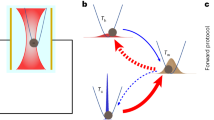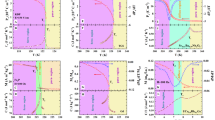Abstract
YOUR issue of February 13 contains, on p. 348, a note on the above subject, in which it is stated that Fahrenheit based his scale upon a scale previously adopted by Newton, Newton's scale having its zero at freezing point and the temperature of the human body marked as 12 degrees. Fahrenheit (says Sir Samuel Wilks) found Newton's divisions too large. He therefore divided them by two. Next he altered his zero to the temperature produced by a mixture of ice and salt. Later on he again divided each degree into four parts, giving the scale which is now in use. This explanation is substantially that which is given in the “Encyclopædia Britannica.”
This is a preview of subscription content, access via your institution
Access options
Subscribe to this journal
Receive 51 print issues and online access
$199.00 per year
only $3.90 per issue
Buy this article
- Purchase on SpringerLink
- Instant access to full article PDF
Prices may be subject to local taxes which are calculated during checkout
Similar content being viewed by others
Rights and permissions
About this article
Cite this article
RAM, G. The Origin of the Scale of Fahrenheit's Thermometer. Nature 65, 391 (1902). https://doi.org/10.1038/065391a0
Issue date:
DOI: https://doi.org/10.1038/065391a0



